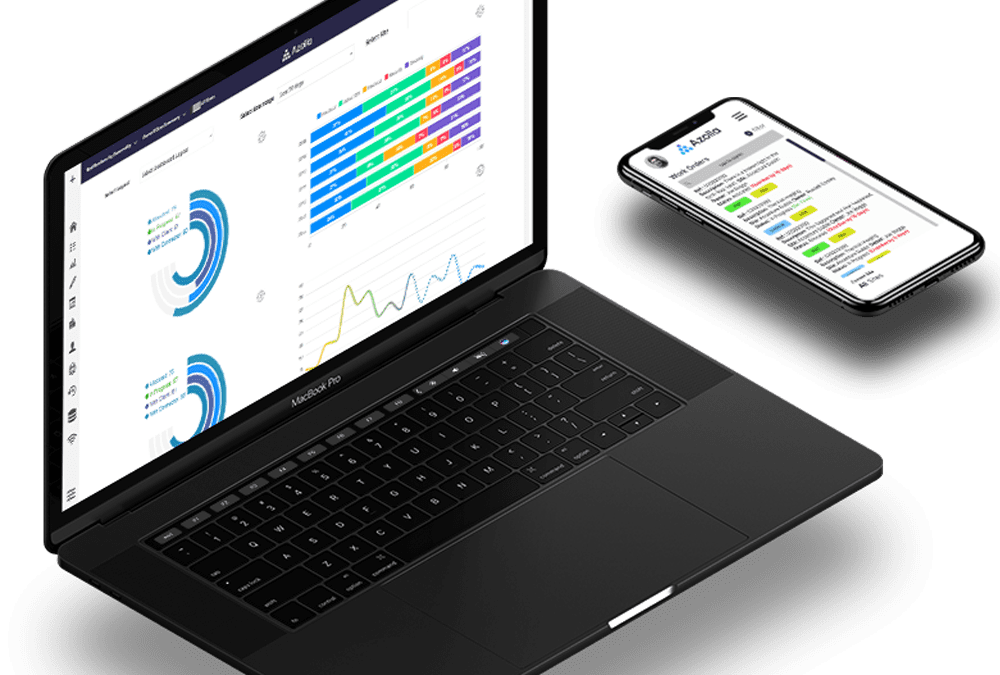Software Transforming Facility Management
Streamlining facility management processes through advanced software solutions
Managing facilities effectively has always been a complex and multifaceted task. The diverse range of responsibilities, from overseeing maintenance and security to optimising energy consumption and ensuring a safe environment, demands a comprehensive approach that can often lead to chaos if not managed efficiently.
However, the advent of advanced software solutions has revolutionised the field, enabling facility managers to transform chaos into control. In this article, we delve into the transformative power of software in facility management and how it has revolutionised the way we handle our built environments.
1. Centralised Data Management
Before the advent of modern software, facility management often relied on fragmented systems that lacked integration and real-time data updates. This led to inefficiencies, information silos, and difficulties in making informed decisions. The new wave of facility management software offers a centralized platform that consolidates all essential data related to a facility. From maintenance schedules and equipment records to occupancy rates and energy consumption metrics, facility managers can access real-time insights from a single dashboard. This integration ensures better coordination, timely responses to issues, and informed planning for the future.
2. Proactive Maintenance and Asset Management
Traditional facility management often followed a reactive approach to maintenance, addressing issues only after they had already caused disruptions. However, modern software solutions leverage data analytics, Internet of Things (IoT) sensors, and predictive algorithms to enable proactive maintenance. By analysing historical data and predicting potential problems, facility managers can identify critical maintenance needs in advance, schedule repairs during downtime, and prevent costly breakdowns. This shift from a reactive to a proactive maintenance approach improves equipment lifespan, reduces unplanned downtime, and optimises maintenance budgets.
3. Enhanced Security and Safety Measures
In an increasingly security-conscious world, ensuring the safety of occupants and assets is a top priority for facility managers. Today’s facility management software incorporates advanced security features, such as access control systems, surveillance cameras, and alarm integration. These tools empower managers to monitor premises in real-time, detect anomalies, and respond swiftly to security breaches. Additionally, the software can facilitate automated emergency notifications, evacuation protocols, and compliance adherence, further bolstering safety measures.
4. Energy Efficiency and Sustainability
With a growing focus on environmental sustainability, facility managers are under increasing pressure to reduce energy consumption and adopt eco-friendly practices. Software solutions play a crucial role in achieving these goals. By analysing energy consumption patterns and identifying wasteful practices, facility management software helps managers implement energy-efficient strategies. This may include optimising heating, ventilation, and air conditioning (HVAC) systems, implementing lighting controls, and integrating renewable energy sources where feasible. The result is not only reduced environmental impact but also substantial cost savings for the facility.
5. Streamlined Space Utilisation
Effective space utilisation is critical for maximising the potential of a facility, whether it’s an office space, educational institution, or manufacturing plant. Facility management software provides valuable insights into space occupancy, traffic flow, and usage patterns. By understanding how spaces are utilised, managers can identify opportunities for optimisation, rearrange layouts, and create a more productive and comfortable environment for occupants.
6. Compliance and Reporting Made Easy
Regulatory compliance is an essential aspect of facility management, particularly in industries with stringent safety and environmental regulations. Manually managing compliance requirements can be cumbersome and prone to errors. Facility management software streamlines the process by automating compliance tracking, generating reports, and notifying managers of upcoming inspections or deadlines. This not only ensures adherence to regulations but also provides a robust audit trail in case of inspections.
Conclusion
Facility management software has emerged as a transformative force that revolutionises the way we manage our built environments. By centralising data management, enabling proactive maintenance, enhancing security and safety measures, promoting energy efficiency, streamlining space utilisation, and simplifying compliance, this software empowers facility managers to convert chaos into control.
The adoption of such advanced software solutions in facility management has far-reaching implications, positively impacting occupant satisfaction, operational efficiency, cost management, and sustainability efforts. As technology continues to evolve, the future of facility management looks even more promising, promising further innovations and increased integration of smart systems to create smarter and more efficient built environments.
Azolla
Facilities Management software providers at the forefront of providing these solutions that are transforming Facilities include Azolla.
Azolla is an IOT Platform that synergises sensor technology seamlessly into a Facilities Management system empowering users to monitor, control and interact with their asset environment.
Azolla includes:
- An Asset Register to track equipment usage and keep a complete auditable record of all interactions.
- A planning module to allow to you plan preventative and reactive work around you and your contractors’ resource pool.
- An IOT module to allow you to link in sensor data to provide 24/7 monitoring of your facility.
- A Notification Board creating an operations centre highlighting all work outstanding along with IOT alerts received.
- Supplier Module to track insurance and documentation renewal
- A Permit to Work module to ensure all work is carried out safely and to a prescribed system
- A Risk Assessment module to track Health & Safety related tasks including Corrective Actions.
Future-proof your business: Our software is built to scale with your needs, accommodating portfolio growth and evolving industry requirements.
Learn how our software can work for your business contact us below.

